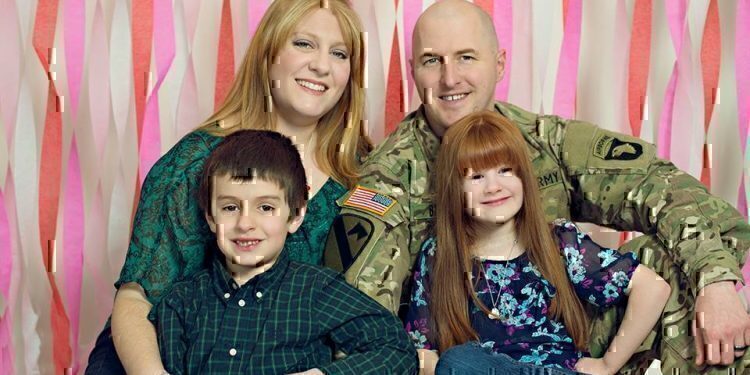Article by Guest Contributor, Carrie Garner, Army Spouse
I don’t know what changed. Maybe it was the shows or movies I watched that were about the end of the world. More than likely, it was the show Doomsday Preppers. That show inspired me to make a raised bed garden and plant it in the front yard, grow tomatoes in 5 gallon buckets, also in the front yard, and be the subject of hot topic in the neighborhood. The top 5 things I learned about supporting a family, in Missouri, during a severe drought AND through an EF-5 tornado about 2.5 hours away; is countless knowledge that I can take wherever the Army sends me.
First, you have to be able to put in hard work for anything relating to sustainable living. You can rest easy though, knowing that work is well worth the rewards. These are the top 5 things you can do, to save money and feed your family; should anything happen…or just as a fun family project!
1) Research
It is vital that you do research on the plants you want to grow and the areas in which you can plant. This is especially important if you have a picky landlord or live on post. I chose to do many container gardens along with raised beds so I didn’t have to till up any soil.
A good beginner raised bed garden size is 9×13. This allows room to tend to the garden from either side without directly walking in it. The frames are inexpensive to buy and even cheaper to make. Gardener’s Supply has a wide variety of frames and options to buy, or you can visit your local hardware store and purchase the equipment. One piece of advice is to buy treated wood that won’t rot after the growing season.
If you are living in an apartment complex with no personal yard access, you can grow things in containers (I used 5 gallon buckets with holes punched in bottoms). I had a lot of success with tomatoes and peppers, but there are several other fruits and vegetables that you grow well in small areas too. I recently read online that there is an apple tree that you can grow in a container. They are called Columnar Apples and are available for purchase. They fruit quicker than regular apple trees and grow up to 7-9′ tall but their branches do not spread. This is just one of the examples of the many things you can grow in a small area.
2) Preserve
The next important step is being able to preserve the food you have grown. There are several different ways to achieve this. One easy method is drying the food. It is cheap and easy, and almost all foods can be harvested. Many of us are familiar with this, especially if we have made our own beef jerky or used a food dehydrator. You can also dry your food using just sunlight; making this option a truly sustainable way. Homemade dehydrators are simple to make. You can use soft lumber, cut into squares with screen on the top to prevent animals/bugs from getting into the food. Another option is using your oven or regular food dehydrator. Dehydrated foods have many nutrients; typically most are lost when you cook the food regularly.
Canning is also another way to preserve food. Almost anything can be canned. either by water bath or using a pressure cooker. Canning saves money on goods you would usually buy at the local market and retains many of the foods nutrients, like dehydration. Although canning is very simple, it is important that you follow the guidelines for the acidity of food involved, time it will take to process and jar sealing. Canned goods, if not done properly, can cause severe food poisoning.
3) Healing
Another good thing to know about sustainable living, is the fact that many minor ailments can be treated with plants and other things you may have lying around your house. I’m not advocating only using nature as a way to treat illnesses, but in some circumstances, there are some tried and true methods of healing.
Everyone should have heard about the aloe vera plant. Its main ingredient is found in many over the counter items found at your local pharmacy. You can also grow the aloe vera plant at home. Aloe vera is mainly used for skin irritations. If you break off the tip of a plant, it will heal itself and refill for the next time you need it.
The chamomile plant is also useful for indigestion, chills and reportedly for nervousness. Many of us have tried chamomile as a tea form; usually, when we have problems sleeping. This is another plant you can grow yourself. Another word of caution, is to be sure and research the plants before use as, some of them resemble toxic plants.
4) Prepare
Disaster preparedness is a also a part of the sustainable living lifestyle. You should research the area you live, in order to see if the spring season has a lot of tornadoes, or you are close to a fault line etc. As every military family should know, expect the unexpected. Keep as much water, food and supplies as you deem necessary for your family. Don’t forget about your 4-legged friends either. I am a strong advocate for a weather radio, no matter what area you live in. They are small, inexpensive and could save your life. Some of the newer ones even provide a way to charge your electronic devices by turning the handle or using solar power.
5) Fun
Sustainable living doesn’t always have to be about work and preparing your family for the worst. It can also be fun and you can create different “fun” things from all your hard work. You can press flowers and leaves; using what you already have like weights and newspaper. Making homemade potpourri is also simple, using dried flowers, essential oils and the dehydrator that you built.
Sustainable living may sound like a lot of work, but just remember the rewards you will have at the end. It’s easy to get lost on what to do and how to do it, but fortunately there are resources everywhere. Two books that are a wealth of knowledge are The Illustrated Encyclopedia of Country Living by Abigail Gehring and The Encyclopedia of Country Living by Carla Emery. Sustainable living doesn’t have to be just a chore. It can be fun too!




